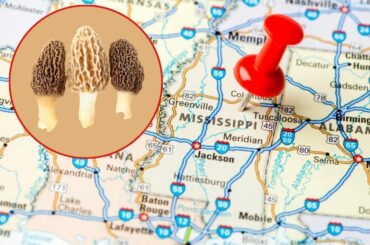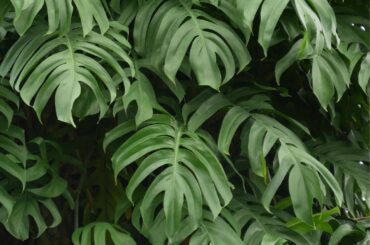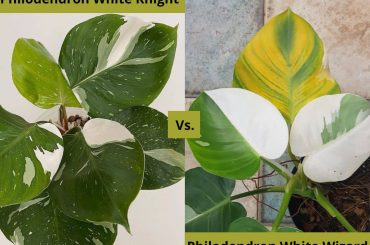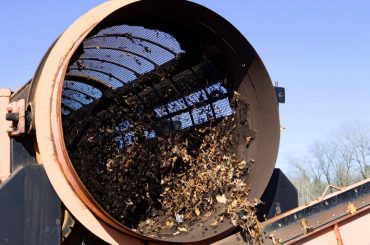Philodendron Mamei and Plowmanii are extremely rare and highly sought-after philodendrons. What makes these two plants special is that they look identical. In fact, they are so similar that even experienced growers have a difficult time telling them apart. Therefore, we have decided to compare the similarities and differences of Philodendron Mamei Vs. Plowmanii.
These plants are members of the subgenus Meconostigma, which contains some of the most beautiful and exotic philodendrons. So, let’s get started! Here is a comparison of Philodendron Mamei and Plowmanii:
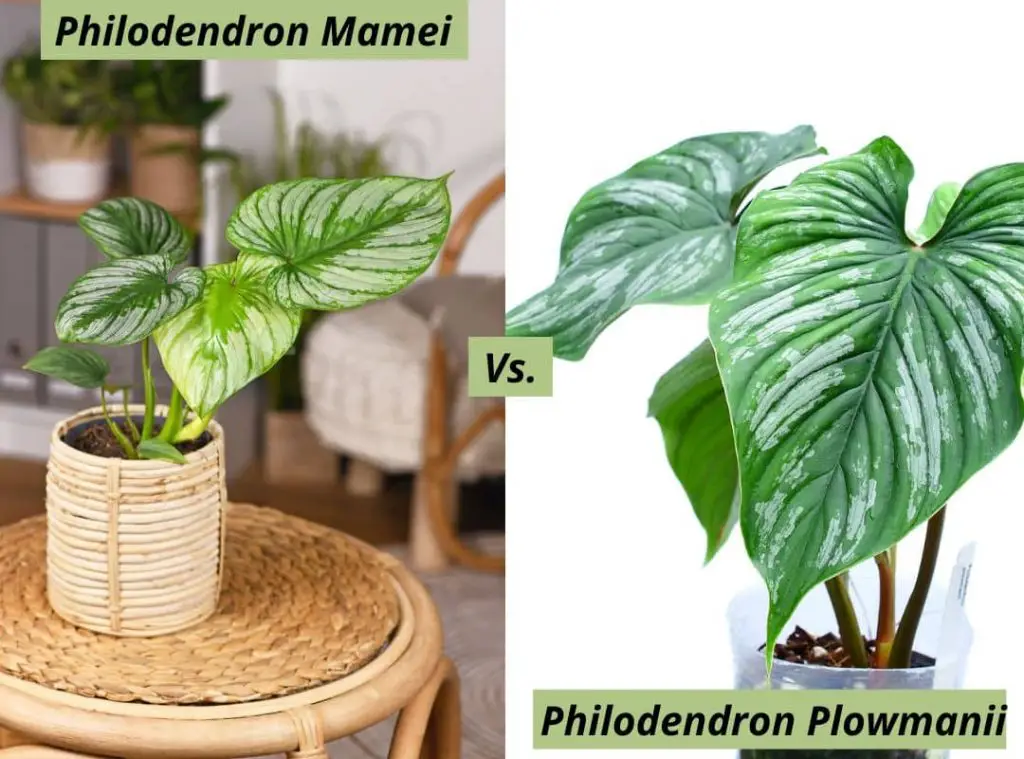
Philodendron Mamei Vs. Plowmanii: Differences
First, let’s take a look at the differences between these two philodendrons.
Petioles
This is perhaps the only way anyone can differentiate these two plants because both plants look exactly the same. However, the petioles of Philodendron Plowmanii have ruffles on the edges, while those of Philodendron Mamei are smooth. They might not be distinct when the plants are young, but the ruffles become more pronounced as they mature.
Leaves
The leaves of these two philodendrons are another way to tell them differently. The leaves of Philodendron Plowmanii are slightly larger and have a less pointed shape than those of Philodendron Mamei. Further, Plowmanii leaves have widely spaced veins with less prominent secondary veins. On the other hand, Mamei leaves have closely spaced veins with prominent secondary veins.
Variegations
Variegations of the leaves are another way to tell these two plants apart. Philodendron Mamei has silvery grey variegations on the top of its leaves, while Philodendron Plowmanii has creamy white variegations. Both plants may not always have variegations, but when they do, this is a reliable way to tell them apart.
Growth Rate
Another difference between these two philodendrons is their growth rate. Philodendron Plowmanii is a huge plant, hence takes much time to mature. On the other hand, Philodendron Mamei is a fast-growing plant and can double in size within a year.
Mature Size
While these two plants are almost identical in their appearance, they differ greatly in their mature size. Philodendron Plowmanii can grow up to 8 feet (2.4 meters) in length, while Philodendron Mamei only grows up to 3 feet (0.9 meters).
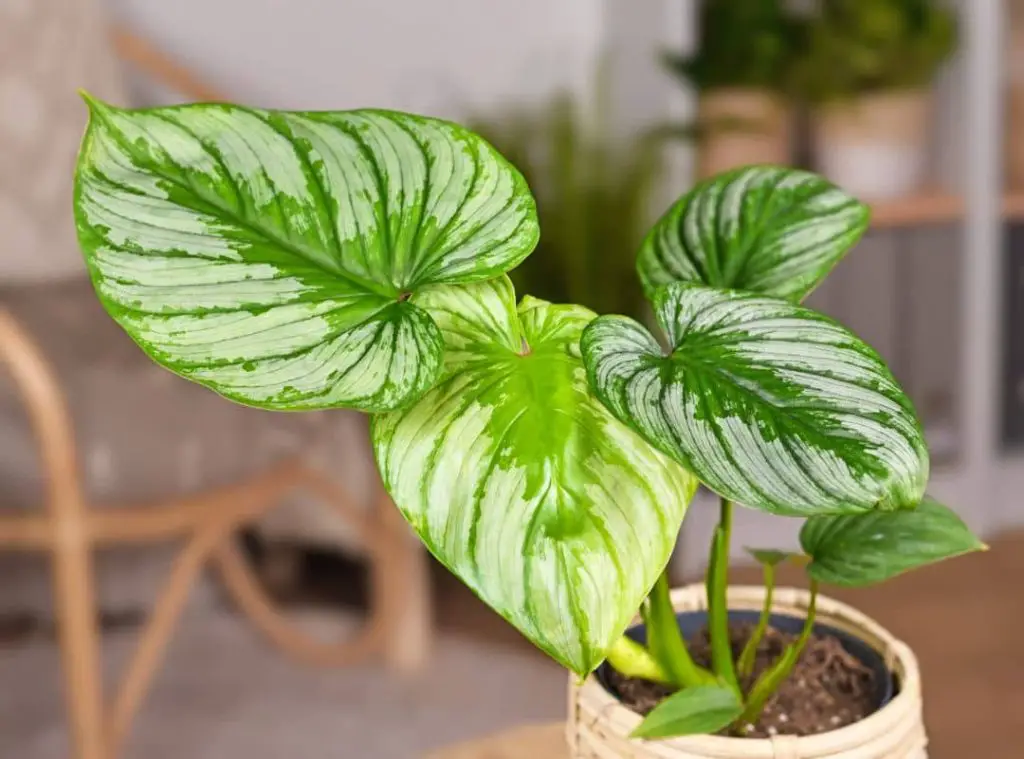
Philodendron Mamei Vs. Plowmanii: Similarities
So, those are the main differences between Philodendron Mamei and Plowmanii. Let us now examine the common traits between these two plants.
Appearance
As we have mentioned before, Philodendron Mamei and Plowmanii are identical in their appearance. They have the same glossy, dark green leaves, and they both climb up trees (or any other support). If you put these two plants side by side, you would be hard-pressed to tell them apart.
Habitat
Another similarity between these two plants is their natural habitat. Both Philodendron Mamei and Plowmanii are native to Colombia and Ecuador. Both of these plants come from tropical rainforests, which explains their glossy leaves.
Plant Type
Both Philodendron Mamei and Plowmanii are aroids. Aroids are a plant family that includes philodendrons, anthuriums, and alocasias.
Growth Habit
Both of these plants are climbers, meaning they will grow up whatever support you provide them. They will both climb trees, fences, or any other vertical support. However, if you prefer, you can also let them grow horizontally.
Leaf Shape
Another similarity between these two plants is their leaf shape. Both Philodendron Mamei and Plowmanii have heart-shaped leaves. The heart shape is more prominent in Plowmanii, but both plants have this shape.
Watering
Although these two plants originate from tropical rainforests, they can not tolerate extremely wet conditions. Like any other Philodendron, Mamei and Plowmanii should be watered when the topsoil is dry to the touch. When the topsoil of your Philodendron is dry, we recommend watering it. In the summertime, twice a week is ideal. Reduce the watering to once a week during the winter, when plant growth slows compared to summer. When in doubt, just let the top two inches of soil dry out before watering your Philodendron.
Lighting
Both Philodendron Mamei and Plowmanii need bright, indirect sunlight to thrive. These plants must never be placed in direct sunlight, as this will scorch their leaves. They can also survive in very low light conditions. However, they will lose their variegation in low light. The ideal location for these plants is near an east- or west-facing window. If you don’t have such a window in your home, you can place your Philodendron near a south- or north-facing window. Just ensure the plant is not in direct sunlight.
Additionally, you can keep these plants in artificial light, such as fluorescent light. We recommend keeping the light on for 12-16 hours per day if you’re using artificial light.
Soil
Like any other Philodendron, Mamei and Plowmanii need well-draining soil. These plants will not tolerate soggy conditions, leading to root rot. The best soil for these plants is a mix of peat moss, perlite, and bark. You can also use potting soil, as long as it is well-draining. If you’re unsure if your potting soil is well-draining, we recommend mixing it with some perlite. A mixture of sand, peat, and loam is also suitable for these plants. Compost can also be mixed into the soil to provide nutrients to the plant.
Temperature
Since these are tropical plants, both Philodendron Mamei and Plowmanii prefer warm temperatures. These plants should never be exposed to temperatures below 50 degrees Fahrenheit (10 degrees Celsius). Otherwise, the plant will perish. The ideal range for these plants is between 60 and 85 degrees Fahrenheit (15 and 29 degrees Celsius). These plants’ leaves will turn brown if the temperature rises too high.
Humidity
Both Philodendron Mamei and Plowmanii prefer high humidity. These plants come from tropical rainforests, where the air is always moist. We recommend placing your Philodendron in a pebble tray if you live in a dry climate. A pebble tray is a thin tray filled with stones and water. You can place your Philodendron pot on top of the gravel so that the pot is not sitting in water.
The evaporation from the water will increase the humidity around your Philodendron. You can also use a humidifier to achieve the same effect. Misting the leaves with water is another approach to promote humidity around your Philodendron. This should be done once or twice a day.
Fertilizer
Although both Philodendron Mamei and Plowmanii can survive without fertilizers, they benefit from being fertilized once a month during the spring and summer. Fertilizer can be applied every six weeks during the fall and winter. You can also skip fertilizing your plant during the winter months. Any general-purpose houseplant fertilizer will work for these plants.
Pruning
Both Philodendron Mamei and Plowmanii benefit from being pruned. Pruning encourages new development while also keeping the plant appearing full and healthy. Since both plants are vines, the pruning process is the same for both. To prune your Philodendron, simply cut the stem back to the desired length.
Additionally, you can remove any yellow or brown leaves from the plant. These leaves are likely dead or dying and should be removed to keep the plant looking its best. You can also trim back any leggy stems. We recommend using sharp, sterile pruning shears to avoid damaging the plant. However, keep in mind that pruning too much can harm the plant’s development.
Pests and Diseases
Both Philodendron Mamei and Plowmanii are susceptible to the same pests and diseases. These include aphids, mealybugs, spider mites, fungal diseases, and root rot. We recommend keeping your Philodendron in a clean environment to keep pests and diseases at bay. Make sure to inspect your plant for pests and diseases regularly. If you notice any problems, take action immediately.
You can also treat your plant with pesticides or fungicides. However, we recommend only using these as a last resort. Some chemicals can harm your plant, so it’s always best to use them sparingly.
Toxicity
Both Philodendron Mamei and Plowmanii are toxic to humans and animals if ingested. These plants contain chemicals that can cause irritation to the skin, eyes, and throat. These plants can cause vomiting, diarrhea, and difficulty breathing if ingested. We recommend keeping these plants out of reach if you have pets or small children. If you suspect that your pet or child has ingested these plants, seek medical attention immediately.
Philodendron Mamei vs. Plowmanii : Which One is Better?
Personally, I don’t see a significant difference between the two plants. It’s all about the space you can provide, your climate, and your personal preferences. If you have more space, Philodendron Plowmanii would be a better option because it can grow up to eight feet long. Otherwise, Philodendron Mamei is a great choice for smaller spaces.
Both plants are easy to care for and make great houseplants. So, it all comes down to personal preference. Philodendron Mamei is slightly more difficult to find since it’s not as common as Plowmanii. However, both plants are available online and at exotic garden stores. At the end of the day, it really doesn’t matter which plant you choose. They’re both great options for anyone looking for a Philodendron species.
Read Next : Philodendron White Knight Vs. White Wizard (A Better Comparison)

